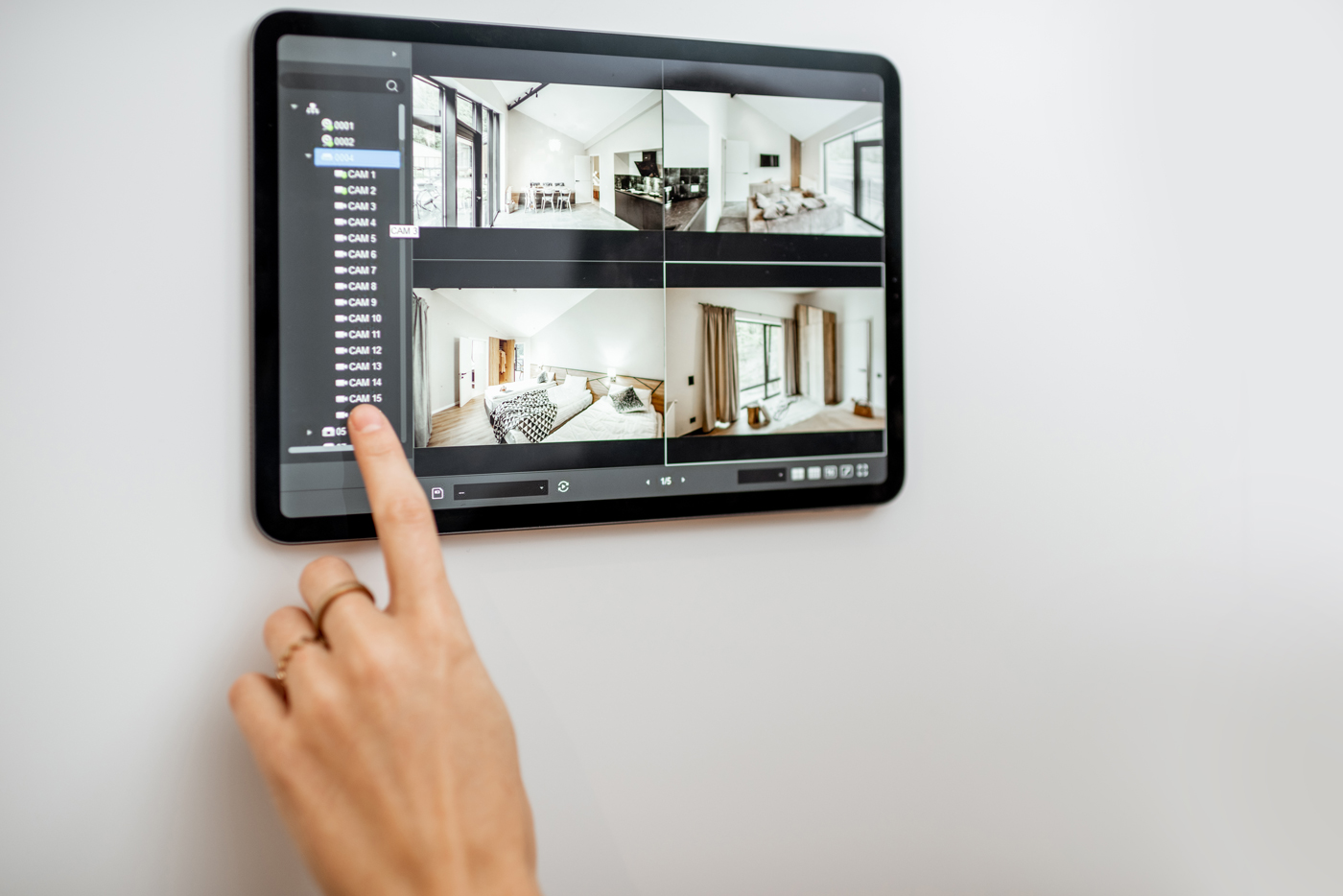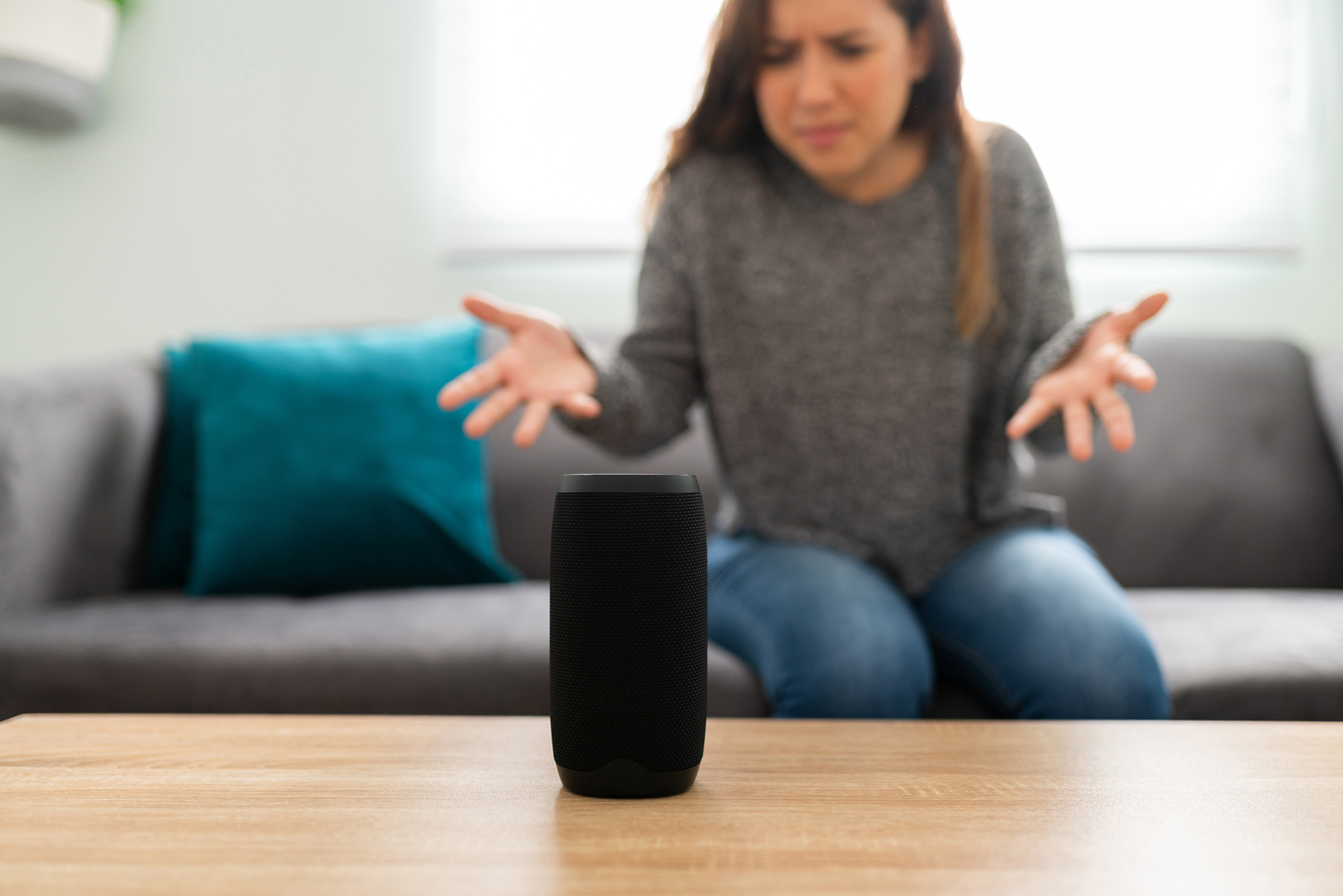Childproof Your Home: Smart Tech for Child Safety
Ensuring your home is safe for children can be challenging. However, with the advent of smart technology, childproofing has become more manageable and efficient. In this article, we’ll explore how you can use smart tech to childproof your home, offering peace of mind and enhancing your family’s safety.
Why Childproofing Matters
Keeping our homes safe for children is a priority for every parent. From electrical outlets and sharp corners to cabinets filled with cleaning supplies and medications, homes are filled with potential hazards. Childproofing is essential to prevent accidents and injuries, ensuring a secure environment where children can explore and learn safely.
According to the Centers for Disease Control and Prevention (CDC), unintentional injuries are the leading cause of death and disability for children in the United States. Childproofing your home can significantly reduce these risks and create a safe haven for your children to thrive.
Potential Hazards if You Do Not Childproof Your Home

Not childproofing your home can pose numerous hazards that could lead to severe injuries or even fatalities. One of the most significant dangers is the risk of falls. Young children are naturally curious and may attempt to climb on furniture, windowsills, or stairs, which can result in dangerous falls. To mitigate this risk, ensure that all furniture is secured to the walls and that safety gates are installed at the top and bottom of staircases.
Another crucial concern is poisoning, as children often explore the world by putting things in their mouths. Household cleaners, medications, and even certain plants can be toxic if ingested. Store all potentially harmful substances out of reach and in locked cabinets. Additionally, be aware of small objects that can be choking hazards. Items such as small toys, batteries, and coins should be kept away from young children to avoid accidental ingestion.
Electrical hazards also pose a significant risk. Uncovered electrical outlets and loose cords can lead to electrical shocks or burns. Use outlet covers and keep cords out of reach to protect children from these dangers. Finally, the risk of burns should not be overlooked; ensure that hot surfaces, such as stovetops and heaters, are out of children’s reach or properly guarded.
The Role of Smart Technology in Child Safety
Smart home technology has revolutionized childproofing, offering innovative solutions that were not available in the past. These devices provide real-time monitoring, remote control, and automated responses to keep children safe, even when parents are not around. Smart tech can also be integrated with traditional childproofing methods to create a layered safety net for your home.
For example, imagine being able to soothe a crying baby from another room using a video monitor with a two-way talk feature, or automatically locking doors that your toddler keeps trying to open. Smart home tech offers a level of convenience and control that can give parents peace of mind and make childproofing more effective.
From toddler to teenager: teaching your family about tech
In today’s world, nurturing a child’s journey from a toddler to a teenager involves integrating modern technology seamlessly into your home. Imagine a cozy home equipped with a smart thermostat and smart sensors, providing a comfortable and efficient environment for your family. Baby-proofing your home with smart baby monitors and a smart video doorbell ensures your baby’s and child’s safety, even when you’re in another room.
As your child grows, leveraging parental control on smart TVs and other devices becomes a key way to keep them engaged yet protected. Smart security cameras placed strategically around your home help you monitor key areas of your home to maintain a safe environment. With smart technology in play, you can unlock an efficient and safe living space.
The power of smart home innovations continues to evolve, offering cutting-edge solutions to keep your children safe and improve your home’s overall functionality. A home with smart technology means enhanced air quality monitoring, and you can ensure the safety of your children as they arrive home from school. Discover how technology can help create a secure and harmonious home for your children, while you enjoy the convenience brought by cutting-edge technology.
Harmonizing Smart Home Technology and Child Safety
With the help of smart home technology, ensuring your child’s safety and well-being has become a top priority for modern families. Smart safety gates and indoor security cameras can alert you if your child enters potentially hazardous areas, reducing the risk of accidents. Leveraging technology continues to be crucial to prevent accidents and secure your doors and windows. These innovative devices allow you to keep an eye on your baby through a smartphone or tablet, help you keep an eye on them no matter where you are in the house.
Smart thermostats can monitor temperature and humidity levels, while automated lighting systems minimize trips and falls. As you embark on a journey to discover how smart home technology continues to meet the needs of your family, you’ll find numerous safety benefits that keep your family as safe as possible. Knowing how to integrate these tools seamlessly can make a significant difference in promoting a secure, worry-free environment.
Essential Smart Home Devices for Families
Smart home devices can significantly enhance the safety of your home. Here are some of the essential gadgets every family should consider:
- Smart Locks and Door Sensors: Smart locks and door sensors prevent children from accessing dangerous areas or leaving the house unnoticed. They can be programmed to require a pin code or fingerprint scan for entry, and some even offer remote locking capabilities for added security. Consider options with auto-lock features that ensure the door is always locked when closed, eliminating the worry of forgetting to lock the door behind you.
- Video Baby Monitors: Video baby monitors allow parents to keep an eye on their little ones from anywhere in the house, or even outside the home with internet access. Look for monitors with features like high-definition video quality, night vision for clear views in low light, and two-way talk functionality so you can communicate with your baby remotely. Some monitors can even be programmed to play lullabies or white noise to soothe your baby back to sleep.
- Smart Plugs and Outlets: Smart plugs and outlets are crucial for preventing electrical accidents. They can be turned off remotely from your smartphone or with voice commands through a smart speaker, eliminating the need to unplug electronics when not in use. You can also schedule smart plugs to turn off automatically during certain times, such as when your child goes to bed, for added peace of mind.
Last updated: 2024-10-11
Last updated: 2024-10-11
Last updated: 2024-10-11
Last updated on 2024-10-11
Smart Locks and Door Sensors
Benefits and Installation:
Smart locks and door sensors prevent children from accessing dangerous areas or leaving the house unnoticed. These devices are designed to integrate seamlessly with your home’s existing security systems, offering both convenience and peace of mind.
They are easy to install, require minimal tools and technical knowledge, and can be controlled remotely via a smartphone app, allowing you to monitor and manage your home security from anywhere. Smart locks can be programmed to provide access to specific individuals at certain times, adding an extra layer of control and security.
Video Baby Monitors
Peace of Mind for Parents:
Video baby monitors allow parents to keep an eye on their little ones from anywhere, providing a sense of security and comfort throughout the day and night. With advanced features like night vision, motion detection, and even two-way audio, these monitors ensure you’re always aware of your child’s activities, whether they’re sleeping peacefully or exploring their surroundings.
Some models even offer smartphone connectivity, allowing you to check in on your baby from virtually any location. Choosing the right video baby monitor can be a significant change for new parents, offering invaluable peace of mind.
Smart Plugs and Outlets
Child-Friendly Power Management:
Smart plugs and outlets are crucial for preventing electrical accidents, particularly in homes with young children. By allowing devices to be turned off remotely, parents can ensure that potentially dangerous appliances are not left on.
These smart devices can be programmed to shut down during specific times, providing an extra layer of safety. This means that curious little fingers stay safe from electrical hazards, giving parents peace of mind and creating a safer home environment.
Smart Cameras for Surveillance
Keeping an Eye on Every Room:
Smart cameras offer comprehensive surveillance of your home. They can be placed in various rooms to monitor activities and alert you to any unusual movements, ensuring children are safe.
These cameras often come equipped with features such as night vision, two-way audio, and motion detection, allowing you to check in on your home from anywhere at any time through a connected app. Whether you’re at work, on vacation, or just in another room, smart cameras provide peace of mind by keeping you informed about what’s happening in your home.
Voice-Controlled Devices
Hands-Free Control for Busy Parents:
Voice-controlled devices like Amazon Echo or Google Home can help parents manage their homes hands-free. These devices are equipped with advanced voice recognition technology, allowing users to control various aspects of their home environment with simple voice commands.
From adjusting the lighting and locking doors to controlling other smart gadgets like thermostats and security cameras, these devices offer a convenient way to maintain a safe and efficient household. For busy parents juggling multiple responsibilities, this hands-free control can be a huge benefit providing peace of mind and simplifying daily routines.
Setting Up a Family Smart Home
Designing a smart home setup for families requires meticulous planning and thoughtful consideration of multiple factors. This includes assessing the specific needs and preferences of each family member, ensuring compatibility between various devices, and prioritizing security and privacy. It’s important to factor in the ease of use and accessibility for all ages, as well as planning for future upgrades and technological advancements.
Planning Your Smart Home Setup
Tips and Considerations:
When planning your smart home, consider the layout of your home, the age of your children, and the specific safety concerns you have. Choose devices that are easy to use and integrate seamlessly into your daily routine.
Integrating Smart Tech with Traditional Childproofing
Combining Old and New Methods:
While smart technology offers many benefits, traditional childproofing methods like baby gates and outlet covers are still essential. Combining these with smart devices creates a comprehensive safety net for your children.
Creating Zones in Your Home
Child-Safe Areas and Play Spaces:
Designate specific zones in your home that are child-safe. Use smart technology to monitor these areas and ensure they remain secure, giving children the freedom to play and explore safely.
Cost-Effective Smart Home Solutions
Budget-Friendly Options:
You don’t need to break the bank to create a smart home. Many affordable smart devices offer excellent safety features, allowing you to childproof your home without overspending.
Customizing Smart Home Devices for Children
User-Friendly Settings:
Customize your smart home devices to suit the needs of your children. For instance, set voice assistants to respond only to adult commands or schedule smart plugs to turn off during playtime.
Enhancing Family Life with Smart Tech
Smart technology not only enhances safety but also improves the overall quality of family life by providing convenience, energy efficiency, and better communication. With features like automated lighting, security systems, and smart home devices, families can enjoy a more comfortable and connected living environment. Absolutely, smart technology has revolutionized the way we live and interact with our homes, bringing a multitude of benefits that enhance both safety and quality of life for families. Let’s delve deeper into some of these aspects:
Enhanced Safety
- Smart Security Systems: Modern security systems come equipped with features like motion detectors, smart locks, video doorbells, and surveillance cameras. These devices can send real-time alerts to your smartphone, allowing you to monitor and respond to security issues from anywhere.
- Emergency Alerts: Smart smoke detectors, carbon monoxide detectors, and water leak sensors can notify you immediately if there’s a problem, giving you a better chance to prevent or mitigate damage.
- Parental Controls: Smart devices offer greater peace of mind to parents as they can monitor their children’s online activities, set time limits for devices, and ensure that they’re only accessing age-appropriate content.
Convenience
- Automated Lighting: Smart lighting systems can be set to turn on and off according to your schedule or in response to your presence, eliminating the need for manual operation. This is not only convenient but also enhances home security by making it appear that someone is home even when the house is empty.
- Voice Assistants: Devices like Amazon Alexa, Google Assistant, and Apple’s Siri integrate with various smart home systems, allowing you to control lighting, thermostats, security systems, and even entertainment options with voice commands.
- Smart Appliances: From refrigerators that can create shopping lists to washing machines you can start remotely, smart appliances take the hassle out of everyday chores.
Energy Efficiency
- Smart Thermostats: These devices learn your schedule and preferences to optimize heating and cooling, significantly cutting down on energy use. Many smart thermostats can also be controlled remotely, allowing you to adjust settings when you’re away from home.
- Energy Monitoring: Smart plugs and energy monitoring systems keep track of the energy consumption of each device. By identifying energy hogs, you can make informed decisions to reduce usage and save on utility bills.
- Automated Shades and Blinds: These can be programmed to open and close based on the time of day or interior light levels, helping to regulate indoor temperatures and reduce the burden on heating and cooling systems.
Better Communication
- Family Networking: Smart home hubs can act as a central point for family communication, enabling features like shared calendars, reminders, and intercom systems that make it easier to coordinate activities and stay in touch throughout the house.
- Home Monitoring: Parents can use smart cameras to keep an eye on their children or pets when they’re in another room or even away from home. This enhances peace of mind and ensures better care and supervision.
Smart Home Automation for Modern Families
Streamlining Daily Routines:
Automating daily routines like turning off lights or locking doors can save time and reduce stress. Smart home devices help create a more organized and efficient household.
Some ways to streamline daily routines with automation include:
- Setting timers or schedules for lights, heating or cooling systems, and other appliances to turn on and off at specific times.
- Installing smart locks on doors that can automatically lock or unlock when you leave or arrive home.
- Using voice-controlled virtual assistants like Amazon Alexa or Google Home to control various smart devices with simple voice commands.
- Setting up motion sensors to automatically turn on lights in rooms when someone enters and turn them off when the room is empty.
- Using smart thermostats that can adjust the temperature based on your schedule or preferences, saving energy and money.
- Connecting kitchen appliances to your smartphone, so you can start or monitor cooking from anywhere in your home.
By automating these daily tasks, you can save time and energy, reduce stress, and create a more efficient and organized living space. With the help of smart home devices, you can simplify your daily routines and enjoy a more convenient and comfortable lifestyle.
Family Room Automation Ideas
Enhance the comfort and convenience of your family room by seamlessly integrating smart lighting, advanced temperature control features, and state-of-the-art entertainment systems. With these cutting-edge enhancements, you can elevate your family time experience, creating a cozy and enjoyable atmosphere for all your gatherings.
DIY Smart Home Projects for Families
Simple Upgrades You Can Do Yourself:
Many smart home upgrades are easy to do yourself, making it convenient to enhance your living space with no need for professional help. Projects like installing smart locks, which can increase your home’s security by allowing you to control access remotely, or setting up a voice-controlled assistant, which can help manage daily tasks and control other smart devices, can be done in a few simple steps.
These upgrades not only enhance your home’s safety and convenience, but also add a touch of modernity and efficiency to your everyday life. With detailed instructions available online and user-friendly interfaces, you can transform your home into a smart haven with minimal effort.
Family Safety with Smart Home Tech
Emergency Alerts and Notifications:
Smart home systems can send emergency alerts and notifications to your phone, keeping you informed of any potential dangers. This feature is crucial for maintaining a safe environment for your children.
Energy-Efficient Smart Home for Families
Sustainability and Savings:
Smart home devices play a crucial role in enhancing both safety and energy efficiency within households. Through implementing automated systems, these devices contribute significantly to minimizing energy consumption, leading to substantial savings on utility bills for homeowners. By utilizing smart technology to optimize energy usage, individuals can not only reduce their environmental impact but also enjoy the convenience of a more interconnected and efficient living space.
Smart Home Security for Families
Protecting Your Loved Ones:
Smart security systems provide comprehensive protection for your home by leveraging advanced technology. These systems, equipped with smart locks, high-definition cameras, and responsive alarms, work seamlessly together to safeguard your family from potential intruders, burglaries, and other security risks. With real-time monitoring and remote access capabilities, you can have peace of mind knowing that your loved ones and property are well-protected.
Educating Children on Smart Home Safety
Teaching Kids About Technology:
Teach your children about the importance of smart home devices and how to use them safely. This education helps them understand the role of technology in keeping them safe.
Remote Home Monitoring for Families
Keeping Connected While Away:
Remote monitoring systems use advanced tech to let you keep an eye on your home from anywhere. Whether you’re at work, on vacation, or just out and about, you can relax knowing your loved ones are safe. This modern solution adds convenience and extra security, keeping you connected and in control of your home with ease.
Future Trends in Smart Home Childproofing
Emerging Innovations:
Stay informed and stay ahead of the curve by keeping up to date with the newest advancements in smart home technology. The evolving trends in this field indicate promising developments that are set to revolutionize the way you childproof your home, offering enhanced effectiveness and convenience like never before.
Addressing Common Concerns About Smart Home Safety

Privacy and Data Security
One of the biggest concerns about smart home devices is privacy and data security. Many families worry about their personal information being collected and potentially exposed due to cyber-attacks. To mitigate these risks, ensure your smart devices come from reputable manufacturers with strong security protocols. Regularly update your devices and use strong, unique passwords for each device to protect against unauthorized access.
Health Risks from EMF Radiation
Some people are concerned about the potential health risks from electromagnetic fields (EMF) emitted by smart devices. Although current research suggests that the exposure levels from smart homes are well within safety guidelines, it’s a good practice to place devices at a reasonable distance from sleep areas and limit unnecessary exposure.
Device Reliability and Malfunctions
Reliability is another common concern, as device malfunctions can potentially compromise safety. To address this, choose well-reviewed products and consider integrating devices that provide manual overrides. This ensures that you can maintain control even if automated systems fail temporarily.
Complexity of Setup and Use
The complexity of installing and using smart home devices can be daunting for some families. Many smart devices are designed to be user-friendly, with step-by-step installation guides and intuitive interfaces. Start with simple projects and gradually integrate more advanced devices as you become comfortable with the technology.
Cost and Affordability
While smart home devices can be seen as an investment in safety and convenience, the initial cost may be a concern. There are many budget-friendly options that do not compromise on essential features. Additionally, energy-efficient smart devices can result in savings on utility bills over time, helping to offset the initial expense.
Addressing these common concerns can help you make informed decisions about integrating smart technology into your home, ensuring both safety and peace of mind for your family.
Potential Drawbacks and Limitations of Smart Home Devices

While smart home devices offer numerous advantages, there are potential drawbacks and limitations that families should consider. One significant concern is the reliability of these devices. As with any technology, smart devices are susceptible to malfunctions, software bugs, or connectivity issues. These problems could temporarily compromise the safety and convenience they are supposed to provide, possibly leaving your home vulnerable.
Another limitation is the dependency on a stable internet connection. Many smart home systems and devices require a continuous and reliable internet connection to function correctly. In areas with spotty or unreliable internet service, this dependency can become a major inconvenience, reducing the effectiveness of the smart home setup.
There is also a considerable learning curve associated with integrating and using smart home technology. Older family members or those not technologically inclined may find it challenging to adapt, leading to frustration or improper use of the devices. The complexity can be particularly overwhelming when multiple devices from various manufacturers need to be configured and managed through different applications.
Financial constraints also pose a limitation. While there are more budget-friendly options available, high-quality smart home devices can still represent a significant upfront investment. Additionally, ongoing costs such as subscriptions for advanced features, cloud storage, or professional monitoring services can add to the overall expense.
Finally, privacy and data security remain ever-present concerns. Despite manufacturers implementing robust security protocols, the possibility of data breaches or hacking incidents cannot be entirely eliminated. Families must remain vigilant about keeping their devices updated, using strong passwords, and being aware of the permissions and data access they grant to various applications and services.
Addressing these potential drawbacks and limitations is crucial to making well-informed decisions about integrating smart home technology into your family’s daily life. By carefully considering these factors, you can take proactive steps to mitigate risks and maximize the benefits of your smart home setup.
Case Study: The Johnson Family’s Smart Home Transformation
Meet the Johnsons, a lively family of five with three young kids, a busy mom, and a gadget-loving dad. They decided to dive headfirst into the world of smart technology to create a safer, more connected home environment. Here’s how their journey unfolded:
The Challenge
The Johnsons wanted to find a way to childproof their house while keeping ease of use and security at the forefront. With little tech experience and plenty of initial skepticism, they wondered if the benefits would outweigh the potential headaches.
The Solution
Determined, they started small, initially installing a smart doorbell and a couple of smart plugs. Excited by the convenience and added layer of security these devices provided, they quickly added smart locks, security cameras, and even connected a few kitchen appliances. Gradually, their home morphed into a smart haven equipped to keep their kids safe and offer peace of mind.
Implementation
| Smart Doorbell: | The smart doorbell allowed the Johnsons to see who’s at the door in real-time, from anywhere. This meant no more unanswered deliveries or unexpected visitors. |
| Smart Plugs and Outlets: | Using voice commands and a smartphone app, they could control their appliances, ensuring gadgets like the TV or stereo were off when not in use, making childproofing more efficient. |
| Smart Cameras: | Strategically placed cameras inside and outside their home ensured they could monitor the little ones’ activities (or mischief) and keep an eye out for any unusual activity. |
| Automated Locks: | With smart locks installed, Mom and Dad didn’t have to worry about lost keys. They could grant access remotely to family members and kids coming back from school, all the while keeping the house secure. |
| Connected Kitchen Appliances: | For a busy family, being able to preheat the oven on the drive back home or get notified if the fridge door was left open was a game-changer in convenience. |
The Results
After a few months of living in their smart home, the Johnsons couldn’t be happier. The kids are safer, the house is more accessible, and the peace of mind that comes with being able to monitor their home from anywhere is priceless. The gadget-loving dad? He’s already thinking of what’s next on the upgrade list!
Key Takeaways
- Start with Essentials: For any family looking to get started, the Johnsons recommend beginning with basic essentials like smart locks and cameras.
- User-Friendly Options: Opt for devices with intuitive interfaces. The Johnsons found that brands offering step-by-step installation guides were particularly helpful.
- Staying Informed: Keeping devices updated and staying informed about best cybersecurity practices helped them mitigate potential privacy risks.
- Budget Wisely: Though tempted to splurge from the get-go, they discovered that incremental, budget-conscious additions were the way to go.
The Johnson family’s experience showcases how embracing smart home technology can transform day-to-day life, striking a perfect balance between safety, convenience, and fun.
Frequently Asked Questions
What are the best smart home devices for childproofing?
Smart locks, video baby monitors, smart plugs, smart cameras, and voice-controlled devices are essential for childproofing your home.
How do smart locks enhance child safety?
Smart locks prevent children from accessing dangerous areas or leaving the house unnoticed. They can be controlled remotely for added security.
Can I install smart home devices myself?
Yes, many smart home devices are easy to install yourself. Simple projects like setting up smart locks or voice assistants can be done with basic tools.
Are smart home devices expensive?
There are budget-friendly options available that offer excellent safety features. You don’t need to spend a lot to childproof your home with smart tech.
How do I educate my children about smart home safety?
Teach them the importance of smart home devices and how to use them safely. Establish rules and guidelines to ensure they understand their role in maintaining a safe environment.
What should I consider when planning a smart home setup for my family?
Consider your home’s layout, the age of your children, and specific safety concerns. Choose devices that integrate well into your daily routine and are easy to use.
Conclusion
Revolutionize the safety of your home with the latest smart technology. Upgrade your living space with smart devices that will not only keep your family safe but also enhance the overall quality of life. Experience the ultimate peace of mind with cutting-edge smart locks and voice-controlled virtual assistants that streamline your everyday routines. Embrace the opportunities that these innovative technologies offer to create a nurturing environment for your loved ones.
Welcome the future of home security and childproofing by turning your house into a safe and welcoming sanctuary where your family can thrive. Elevate your family life with the power of smart technology.

















